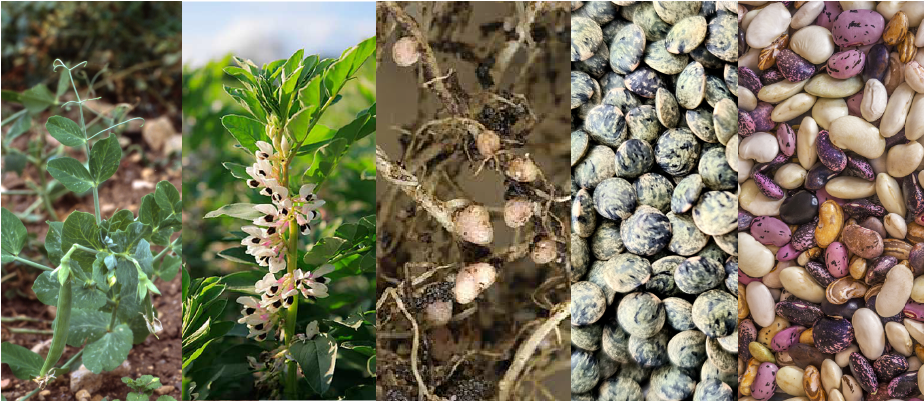
Beans, peas and more
Legumes are a group of plants in the family of Fabaceae or Leguminosae. This family is also known as the pea or bean family. It is the third largest plant family after Orchidaceae (the orchid family) and Asteracae (the daisy family). Pulses are the dried mature seeds that are grown to maturity and then harvested when they are dry. Common pulses are lentils, chickpeas, red kidney beans and dried peas.
These mature seeds are high in protein and easy to store over winter for use in stews, soups and savoury puddings. However, the variety of pulses that we commonly find in shops has diminished over time. There are many forgotten British pulses, which are colourful (red, blue and black), tasty and very nutritious. Red Fox Carlin Peas and Black Badger Carlin Peas, for example, are a much-loved traditional food in the North of England and make a great alternative to chickpeas.
Some important food crops are legumes – soya beans, broad beans, green peas, kidney beans, lentils, lima beans, butter beans, chickpeas, peanuts, cowpeas, black-eyed peas and pigeon peas.
Most legume plants can associate with friendly soil bacteria to produce their own nitrogen fertilisers. They allow the bacteria to enter their roots and form roundish structures called nodules to house these bacteria. These nodules then function like tiny factories that can fix nitrogen from the air and provide nitrogen fertilisers for the plant.
The seeds of legumes are richer in protein than other staple crops like rice, maize, potatoes, cassava and wheat thanks to their nitrogen-fixing ability. This increased nitrogen gives legumes their high protein content, since nitrogen provides the building blocks for protein.
In addition to legume crops, there are many other plants that are legumes. They include gorse, sweet peas, clovers, vetch and trees like acacias, mimosa and tamarind.
